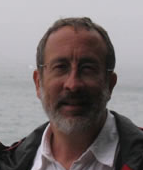
Over half of the US and one third of world population live along the coastlines. In the US alone, from 2000-2010, 9 billion damages incurred from floods. Dr. Robert Brakenridge is at the forefront of flood studies by using advanced satellite remote sensing and geographic information science technologies. He heads the Dartmouth Flood Observatory, which contains comprehensive database on floods and is, frequently, used by other flood researchers.
You oversee a team of researchers who use Terra instruments to study floods. Can you discuss how and why Terra instruments are used to study floods?
BB: Terra’s always-on sensor (MODIS) provides unprecedented imaging of the Earth’s changing surface waters on a near-daily basis, worldwide, at spatial resolutions of as good as 250 m. This capability now allows inundation from large floods to be to routinely mapped, in near-real time, and recorded for posterity. The latter task provides very useful information for future flood risk evaluation. Floods cover large regions, so that MODIS’s big image “œfootprint” is a major advantage. Also aboard Terra, the ASTER sensor, then can provide as well the detailed mapping of smaller areas of land as much higher spatial resolution.
Dartmouth Flood Observatory contains a database that stores flood attributes. Can you discuss some of these attributes and discuss how they may be used for modeling purpose?
BB: One route towards better flood prediction is to simply obtain a better record of what is occurring. The Flood Observatory does this, in part, by remote sensing. Again the temporal and geographic sampling of MODIS allows us to track floods worldwide, year after year. Patterns then emerge: which portions of the monsoonal regions flood first; which areas are predictably affected by snowmelt in the spring, and how variable are the floods, each year. We can now compare the number of floods, and their locations, and their intensities, this year, with past years. Previously, one could do this, for some nations, using point-site streamflow records (which only indirectly indicate actual overbank flooding). Now we can do this directly, by imaging and mapping and preserving the maps of actual flooding.
What roles do floods play in Earth System Science?
BB: Floods are a component of the global water cycle, and along some rivers a large portion of total annual runoff is transmitted during these time-restricted events. Ground-based measurement stations are often destroyed during large floods, which are the events most easily well-measured from space. Floods also transport major quantities of sediment, and including materials such as organic and inorganic carbon that are important in understanding the global carbon cycle. Many other practical applications are there to be developed: transport of heavy metal pollutants, absorbed onto sedimentary particles, for example: where do these transported and deposited pollutants cause human health issues? Measuring the fluxes and pathways of flood water is indeed best performed from orbital sensors.
What are some long term global effects of flooding?
BB: There are major humanitarian and economic issues every year from flooding, worldwide. Pakistan is still recovering from the catastrophic flood along the Indus River (2010), the NE USA has, of this writing, been severely affected by tropical storm Irene flooding (especially the New England states); this past winter much of E. Australia was experiencing unprecedented flooding over vast areas, which we could monitor and map each day via Terra MODIS.
Flooding occurs on every continent, but most fatal floods occur in Asia, Southeast Asia, Africa, Central American and the Caribbean according to one of the papers you co-authored. Is there a reason why flooding occurs more frequently in developing nations?
BB: Flooding causes enormous damage in the more-developed nations, and it can be lethal; but it is in nations such as Pakistan, India, China, Bangladesh, Mexico, the Philippines, sub-Saharan African, and the nations of Indochina where fatalities are most abundant. In part, this is due to lack of warning systems (orbital sensors have a role to play in improving this); there may also be lack of basic information as to what lands are being flooded (here the Flood Observatory’s near-real time flood mapping efforts are important); fatalities are also due to high population densities and inadequate control structures and drainage (in both the cities and the rural areas). In some cases, development assistance has exacerbated the damage, by providing a false sense of protection and fostering more development behind supposedly protective levees.
Why is it important to study floods?
BB: Floods are an integral part of floodplain ecosystems, and much of the global human population resides on floodplains. We live close to rivers, and we misunderstand their processes at our peril! Many scientists who study rivers are urging different sorts of engineering responses to floods and flood hazard: approaches that work with the rivers, and their natural processes, are more likely to be successful in the long term. The recent planned avulsion (diversion) of the Mississippi River to a pre-planned spillway is a good example of how setting aside some lands for temporary use by a river in major flood can help save urban properties downstream.
How did you get interested in the study of floods?
BB: In 1993, during the Great Flood of the Upper Mississippi River, I flew “œunderflew” a radar satellite imaging of this flooding (ERS-1, an ESA satellite). My colleague Jim Knox and I flew in a small plane at about 900 ft along the flooded valley while this satellite was acquiring images, which we then used to map the flood. I interrupted my other work to do this, but found the topic of such inherent interest that my work has focused on flood remote sensing ever since then.

